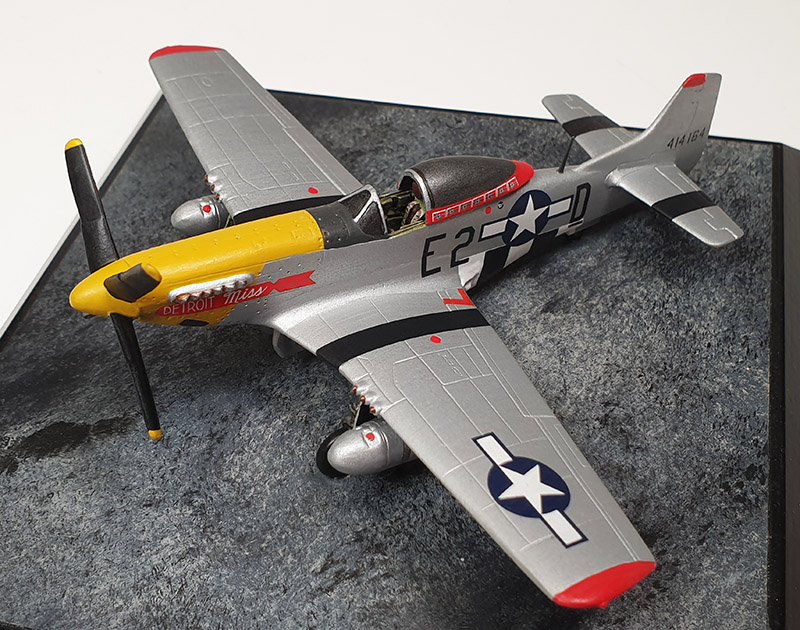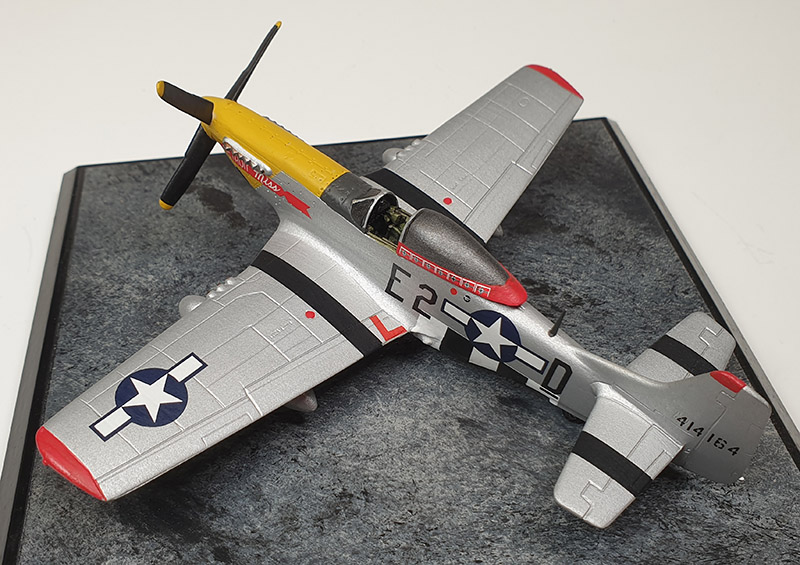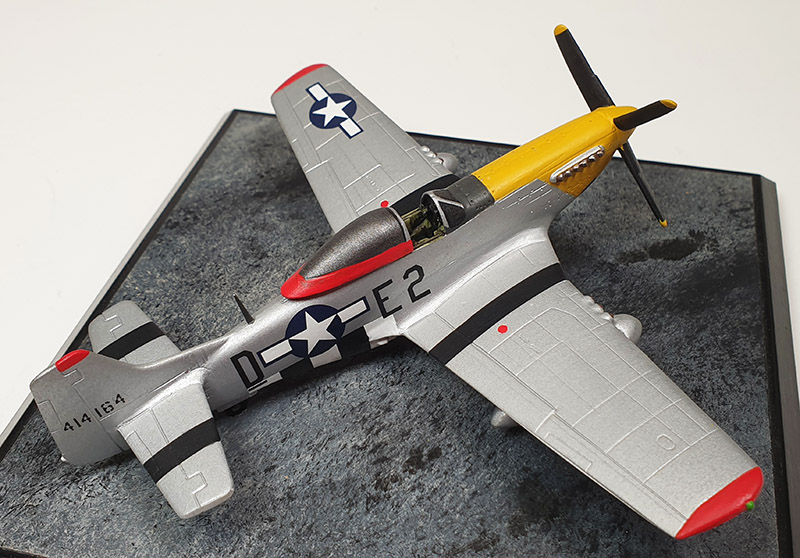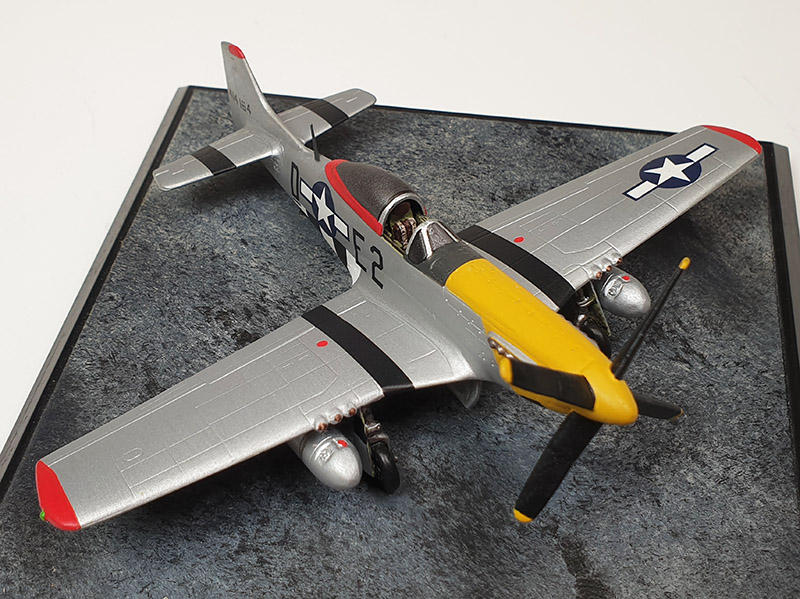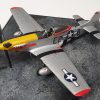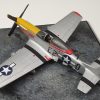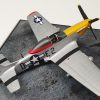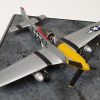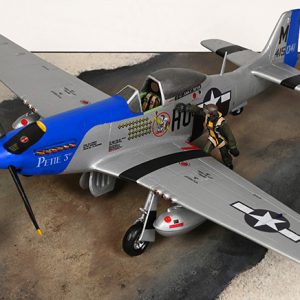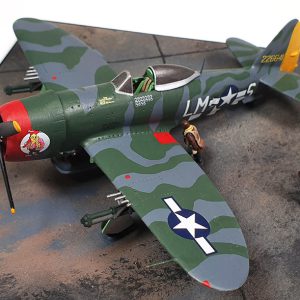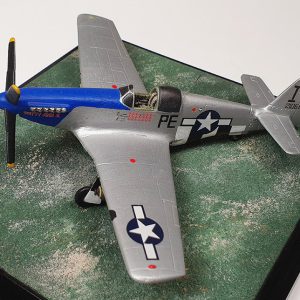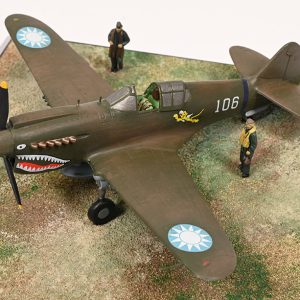North American P-51D Mustang 44-14164 E2-D “Detroit Miss”,
1st Lt. Urban Drew, 375th FS, 361st FG, Bottisham, October 1944.
Urban Drew joined the US Army Air Force in October 1943 at the age of 18, and on finishing his flying training was retained as an instructor on P-51s. In May 1944 he sailed to England on the Queen Elizabeth, and was posted to the 375th Fighter Squadron, 361st Fighter Group at Bottisham, near Cambridge.
During his tour with the “Yellowjackets”, “Ben” Drew completed seventy-five missions and was credited with six kills. Notably, on 7 October 1944 he shot down two Messerschmitt Me 262s, the first Allied pilot to destroy two German jets in air-to-air combat. What follows is his account of the incident in his P-51D Mustang ‘DETROIT MISS’.
‘I was leading decoy squadron when I went down to join a fight that was going on under the box of bombers behind our box. When I got there the fight had been dispersed and I could not locate any enemy aircraft. I had left my red section with the bombers and I had just one flight with me due to a number of previous abortions. I couldn’t locate our bombers so I joined up with some red tailed B-17s that were short on escorting fighters. I stayed with them until I spotted two enemy aircraft on the airfield at Achmer. I watched them for a while and saw one of them start to taxi. The lead ship was in take off position on the east-west runway and the taxiing ship got into position for a formation take-off. I waited until they both were airborne and then I rolled over from 15,000 Ft and headed for the attack with my flight behind me. I caught up with the second Me-262 when he was about 1,000 Ft off the ground, I was indicating 450 mph and the jet aircraft could not have been going over 200 mph. I started firing from about 400 yds, 30 deg deflection, as I closed on him, I observed hits all over the wings and fuselage. Just as i passed him, I observed I saw a sheet of flame come out of near the right wing root. As I glanced back I saw a gigantic explosion and a sheet of of red-orange flame shot out over an area of about 1,000 Ft. The other jet aircraft was about 500 Yds ahead of me and had started a fast climbing turn to the left. I was still indicating about 400 mph and I had to haul back on the stick to stay with him. I started shooting from about 60 degrees deflection, 300 Yds and my bullets were just hitting the tail section of the enemy aircraft. I kept horsing back on the stick and my bullets crept up the fuselage to the cockpit. Just then I saw the canopy go flying off in two sections and the plane rolled over and went into a flat spin. He hit the ground on his back at about a 60 degree angle. I did not see the pilot bale out. The enemy aircraft exploded violently and as I looked back at the two wrecks there were two mounting columns of black smoke. I claim two Me-262s destroyed.’
Before the end of his tour, flying the P-51D Mustang, with two wingmen, destroyed the sole Blohm & Voss Bv 238 flying boat on the water on Lake Schaal in Northern Germany, of which he only found out the correct identity thanks to a BBC documentary in 1974, believing up to then that it had been a Bv 222 Wiking.
During his tour he commanded “A” flight, and then the 375th FS; after returning to the US he was posted to the Pacific, where he flew P-47s with the 413th FS, 414th FG based on Iwo Jima.
After the war he set up the 127th FG, Michigan Air Guard, and retired as a Major. Following his shooting-down of the two Me 262s Drew was recommended for the Distinguished Service Cross, but the application was rejected for lack of confirmation; his gun camera had jammed, and his wingman had been shot down and was a PoW until the end of the war. In 1983 the claim was confirmed by both Luftwaffe and American Air Force records, and Mr Drew was flown to Washington to be presented with the Air Force Cross, which had taken the place of the DSC after the war; he became one of only two recipients of this award for actions in World War II.


